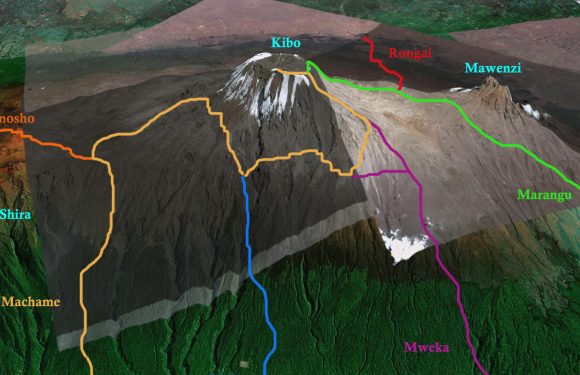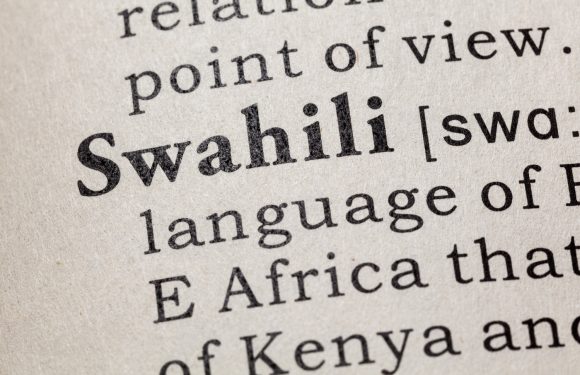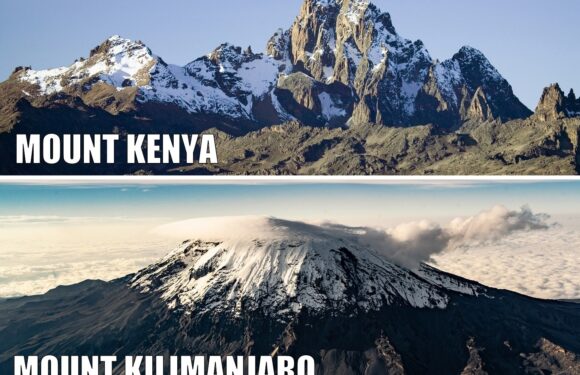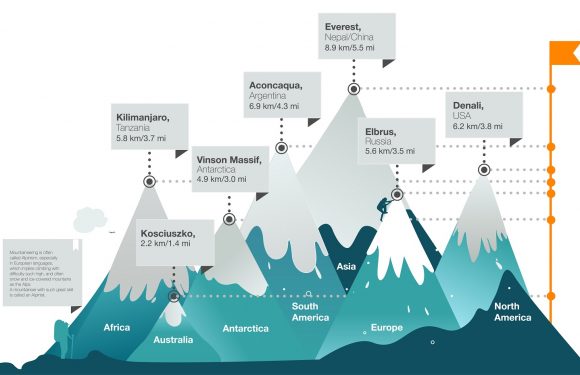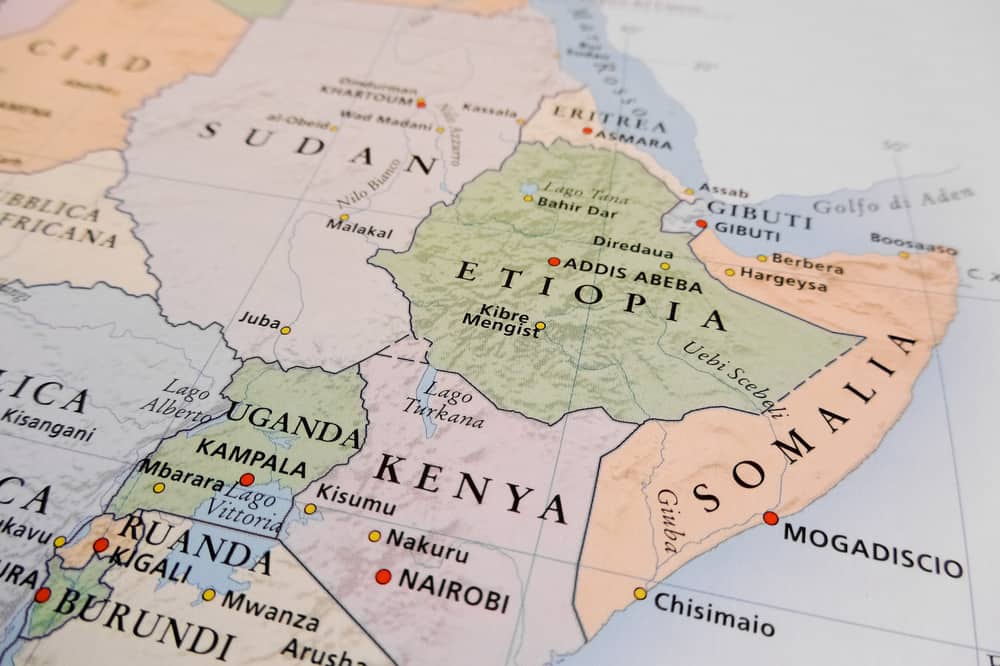
There are 54 countries in Africa. This is the highest number of countries of any continent on Earth.
Here’s how the number of countries in Africa compares to other continents:
- Africa: consists of 54 countries.
- Asia: consists of approximately 49 countries.
- Europe: consists of around 44 countries.
- North America: including Central America and the Carribean, consists of 23 countries.
- South America: consists of 12 countries.
- Oceania: including Australasia, Melanesia, Micronesia, and Polynesia, consists of 14 countries.
- Antarctica: managed under the Antarctic Treaty System by 54 signatory nations, consists of no countries.
List of the African Countries in Alphabetical Order
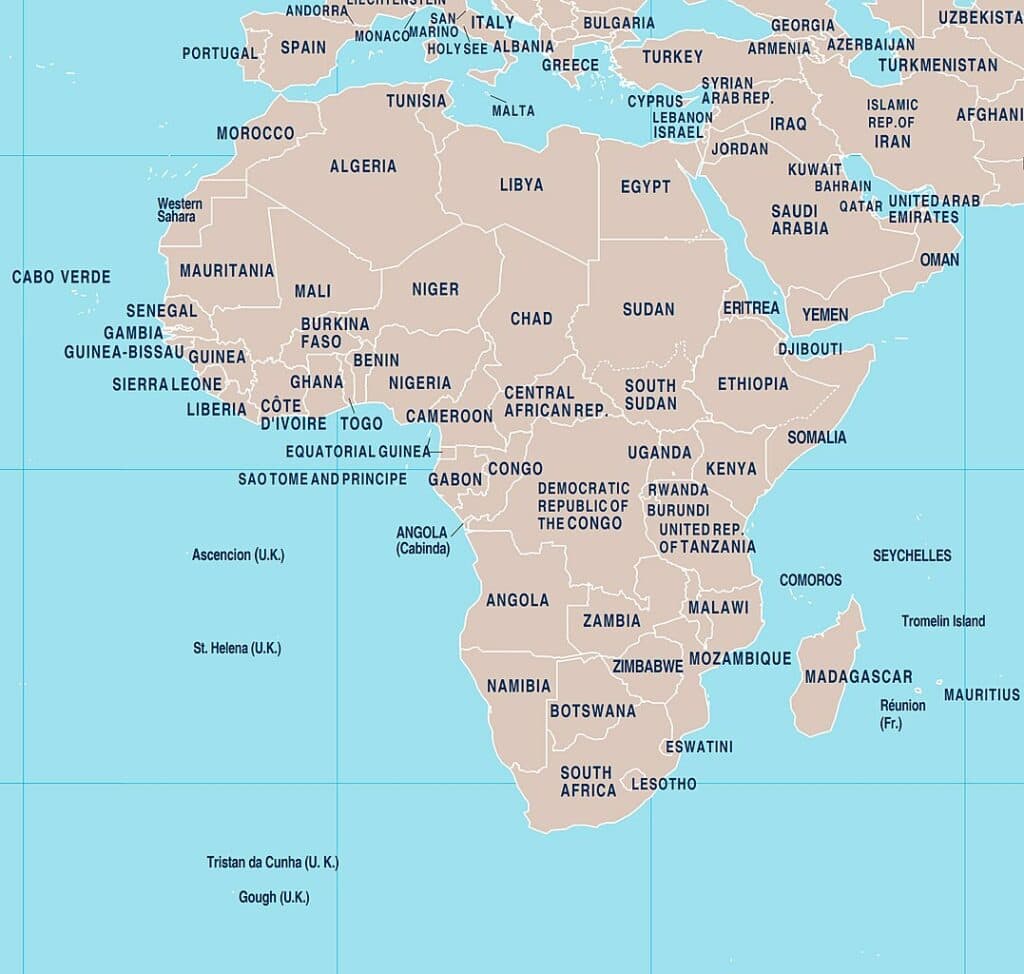
In addition to its 54 sovereign countries, Africa includes a number of territories and regions that are disputed, are dependencies or have special status, often governed by countries outside the continent. These territories are not considered independent countries and are not listed.
- Algeria
- Angola
- Benin
- Botswana
- Burkina Faso
- Burundi
- Cabo Verde
- Cameroon
- Central African Republic
- Chad
- Comoros
- Congo (Brazzaville)
- Congo (Kinshasa)
- Djibouti
- Egypt
- Equatorial Guinea
- Eritrea
- Eswatini (formerly Swaziland)
- Ethiopia
- Gabon
- Gambia
- Ghana
- Guinea
- Guinea-Bissau
- Ivory Coast
- Kenya
- Lesotho
- Liberia
- Libya
- Madagascar
- Malawi
- Mali
- Mauritania
- Mauritius
- Morocco
- Mozambique
- Namibia
- Niger
- Nigeria
- Rwanda
- Sao Tome and Principe
- Senegal
- Seychelles
- Sierra Leone
- Somalia
- South Africa
- South Sudan
- Sudan
- Tanzania
- Togo
- Tunisia
- Uganda
- Zambia
- Zimbabwe
The Size of Africa
Africa is the world’s second-largest continent, trailing only behind Asia in terms of both size and population. It covers an area of about 11.7 million square miles (30.3 million square kilometers). The continent accounts for approximately 20% of the Earth’s land area. To put Africa’s size into perspective, it’s large enough to fit the United States, China, India, Japan, and much of Europe within its borders.
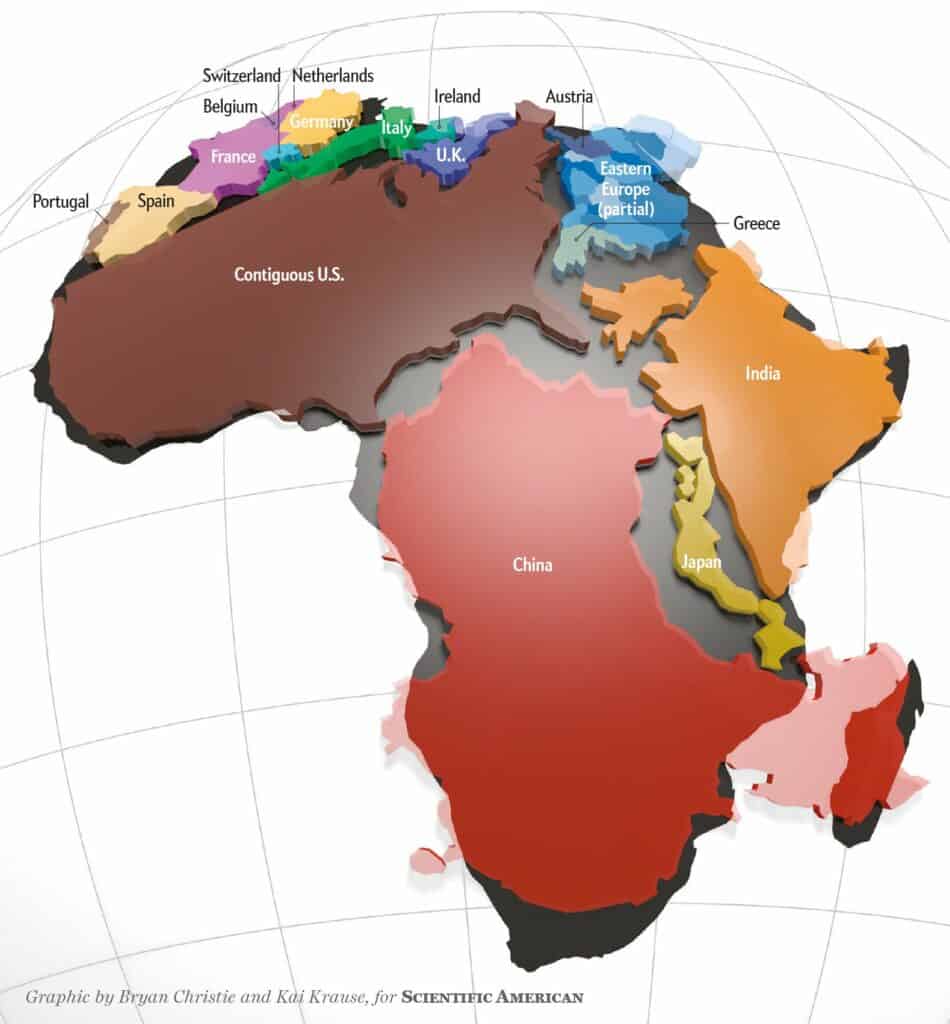
Largest Countries in Africa by Land Area
- Algeria – 919,595 square miles (2.38 million square kilometres)
- Democratic Republic of the Congo – 903,563 square miles (2.34 million square kilometres)
- Sudan – 718,723 square miles (1.86 million square kilometres)
- Libya – 679,362 square miles (1.76 million square kilometres)
- Chad – 495,755 square miles (1.28 million square kilometres)
Smallest Countries in Africa by Land Area
- Seychelles – 174 square miles (451 square kilometres)
- Sao Tome and Principe – 372 square miles (964 square kilometres)
- Comoros – 719 square miles (1,861 square kilometres)
- Cape Verde – 1,557 square miles (4,033 square kilometres)
- Mauritius – 788 square miles (2,040 square kilometres)
The Population of Africa
Africa is the second-most populous continent. As of 2023, it had a population of approximately 1.3 billion people. The continent’s population is growing faster than that of any other global region. Projections suggest that Africa’s population could reach 2.5 billion by 2050, accounting for a quarter of the world’s population.
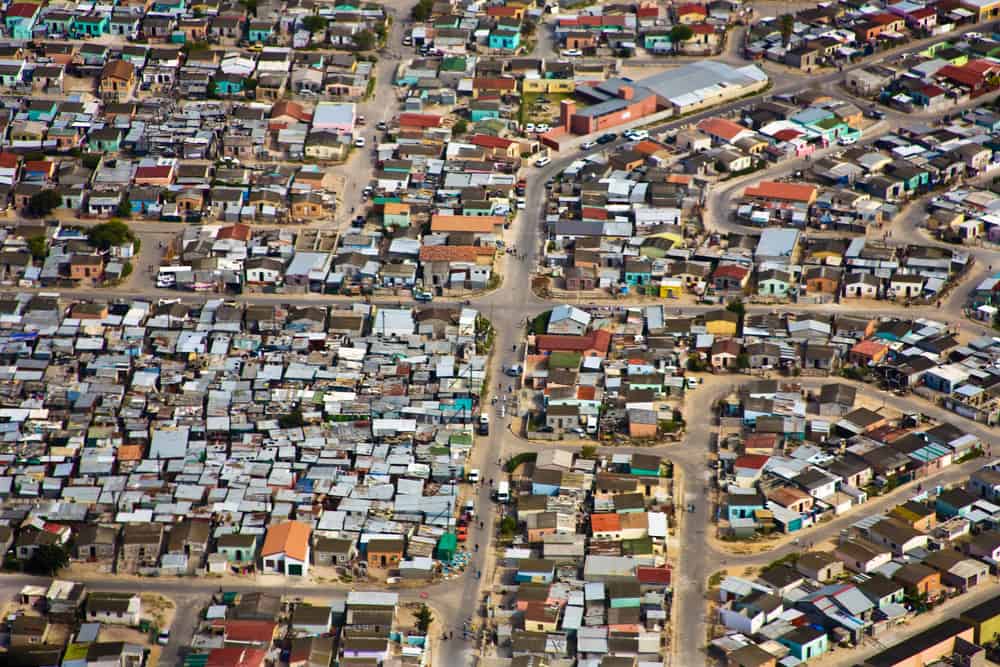
Most Populated Countries in Africa
- Nigeria – Approximately 206 million inhabitants
- Ethiopia – Approximately 115 million inhabitants
- Egypt – Approximately 104 million inhabitants
- Democratic Republic of the Congo – Approximately 87 million inhabitants
- Tanzania – Approximately 59 million inhabitants
Least Populated Countries in Africa
- Seychelles – Approximately 98,000 inhabitants
- Sao Tome and Principe – Approximately 219,000 inhabitants
- Cape Verde – Approximately 555,000 inhabitants
- Comoros – Approximately 869,000 inhabitants
- Djibouti – Approximately 988,000 inhabitants
The Gross Domestic Product (GDP) of Africa
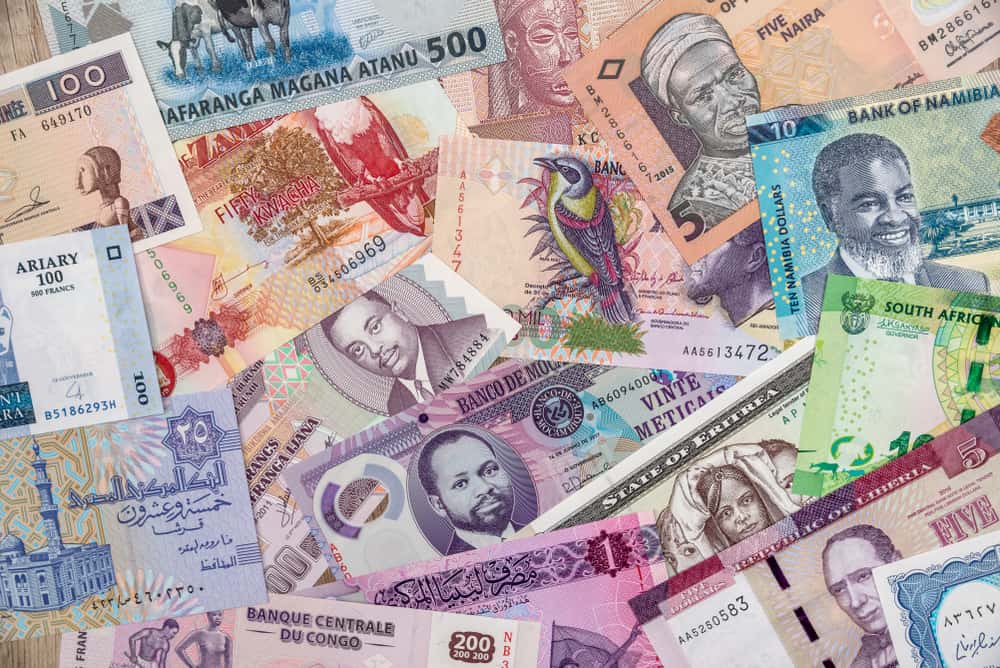
As of 2023, Africa’s combined GDP was estimated at around $2.6 trillion USD. By many standard economic measures, Africa is considered the poorest continent. This assessment is based on various indicators, including GDP per capita, income inequality, access to basic services, and living standards.
However, the GDP across African countries varies widely. Nigeria, Egypt, and South Africa are among the continent’s largest economies. On the other end of the spectrum, many smaller economies, particularly in Sub-Saharan Africa, have GDPs well below $10 billion USD, reflecting varying stages of economic development and diverse economic bases.

Richest Countries in Africa by Most Recent GDP (USD)
- Nigeria – $514 billion
- Egypt – $394 billion
- South Africa – $329 billion
- Algeria – $151 billion
- Morocco – $124 billion
Poorest Countries in Africa by GDP (USD)
- Burundi – $2.7 billion
- South Sudan – $3.2 billion
- Eritrea – $3.4 billion
- Gambia – $3.8 billion
- Lesotho – $4.1 billion














































